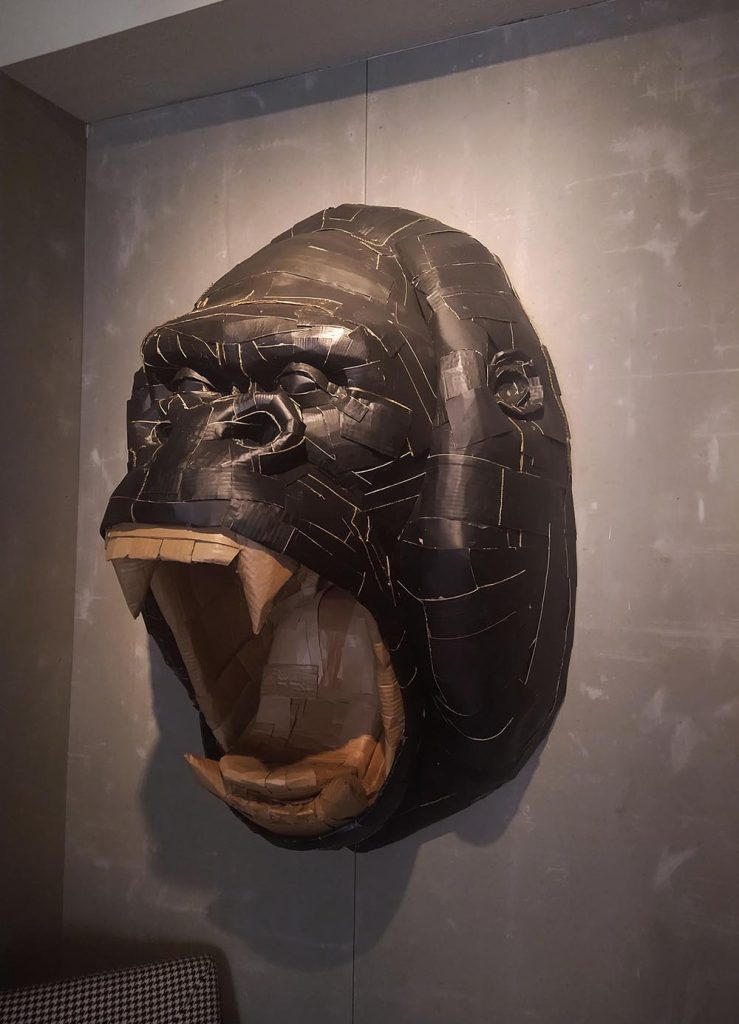
Josh Keyes has opened up his sketchbooks to let us have a rare peek inside. He is a phenomenal artist that works out of his studio located in Portland, Oregon. He was featured on the cover of Hi-Fructose Volume 12 as well as inside Volume 5. His eco-surrealistic paintings evoke powerful emotional responses making one contemplate the Earth’s wellbeing and the effects that humanity has on it’s fragile ecosystems and the animals that dwell within them. What’s most fascinating about Keyes’ sketches is the unique opportunity to follow his methods of logic and the way that he approaches his paintings.


Have you always kept a sketchbook?
Yes I have. I still have an early sketchbook from 1979, it is full of monster drawings and epic star wars battles. There are over forty sketchbooks in my studio that hold the accumulated thoughts, sketches, and ideas I have had over the last thirty years.

Why is it important for you to keep a sketchbook?
For me, keeping a sketchbook is like having a surrogate mind or container, or a reflection pool. I keep a sketchbook in my studio, and one by my bed. Any thought or idea that comes to mind, or lingers goes in there. Sometimes an idea or vision for a painting comes at 3am and so fast, I may only have time to do a scribble and jot down a word, just enough to remember it and work on it the following morning. So often the entries are very quick and crude. A sketchbook helps keep track of these ideas and over time, you can see how the ideas and images you work with correspond to events in both the life and the world. I go through my old sketchbooks once in a while and will often come across an old sketch that at the time I disregarded but now it seems fresh and alive. Inspiration can come from many sources but sometimes the most authentic and charged ideas come from ones own experience and personal history. I suppose if I grew up in today’s world with iphones, ipads and other gadgets, my computer device would function as my sketchbook, but there is something quite wonderful about holding a book that was once blank and is now full of mystery. It’s not unlike a cartographer charting events in both life and dreams.

Do you often sketch out ideas before working them into finished pieces?
I do, but sometimes not a finished drawing, there are many paintings that evolve from a single word, or scribbles. It is often during the process of painting, that I create more detailed sketches and drawings related to the composition and architecture of the image.

What brand of sketchbook do you use?
I am a fan of the black, 9”x12” spiral-bound sketchbook with perforated pages. I get mine from a local Portland art supply store, Muse Art and Design. They are easy to use in the studio, and the pages are large enough to work out imagery and jot down ideas. Each of my sketchbooks has a unique cover. When I buy a new sketchbook, I like to decorate in a random way. I think I do this to give it a sense of mystery and otherness, so that when I go to use it, it immediately sparks my imagination.

What are some good sketchbook tips and habits that you can share with our readers?
I think finding a book and size you enjoy, and feel comfortable using. Sometimes the big books can be a little intimidating, feeling you have to fill up every page like Leonardo. Keeping it in a place where you tend to drift off into daydreams, the computer, tv, or by your bed. Do away with rules or expectations, no one ever has to see this, this is a free space for anything and everything to happen. So don’t be concerned with doing a “good” drawing, just get your thoughts, emotions, and image out. It could even be a book of collages or materials. I suggest you think of the experience like taking a walk along a white sandy beach, with mind clear see what washes up on the shore and make note of it. Last, find a pen or pencil or other drawing tool that feels good. If you haven’t had much experience with drawing materials, go to your local art supply store and buy a selection of things to try out. I tend to use mechanical pencils, they give me a consistent line for drawing and writing. Open play, and explore, and leave the rules at the door.

















